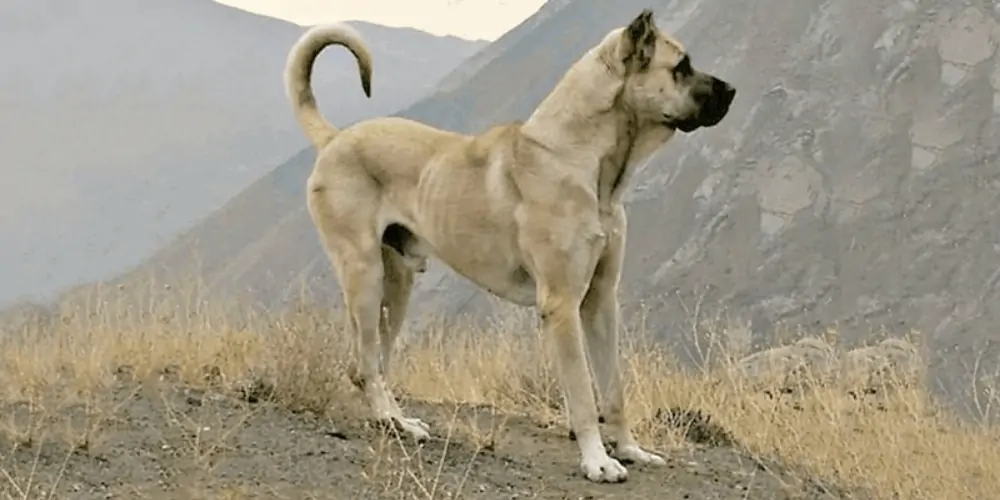The Sarabi dog breed, otherwise known as the Persian Mastiff, Iranian Shepherd, and Iranian Mastiff, is a large and bulky dog that is said to originate from Sarab County( where its name was taken) in East Azerbaijan, Iran.
For many hundreds of years, the Sarabi has been under the employ of shepherds to guard livestock against predators. It is known to be one of the most powerful breeds originating from this region of the world.
Sarabi Dog History
Though the breed originated in Iran, the countries with the largest number of this breed are China, the USA, and Russia.
Because of their history as a guardian, they’re most typically used to guard property while at the same time remaining a popular family pet (though not a wise choice for first-time owners).
Sarabi Dog Size and Weight
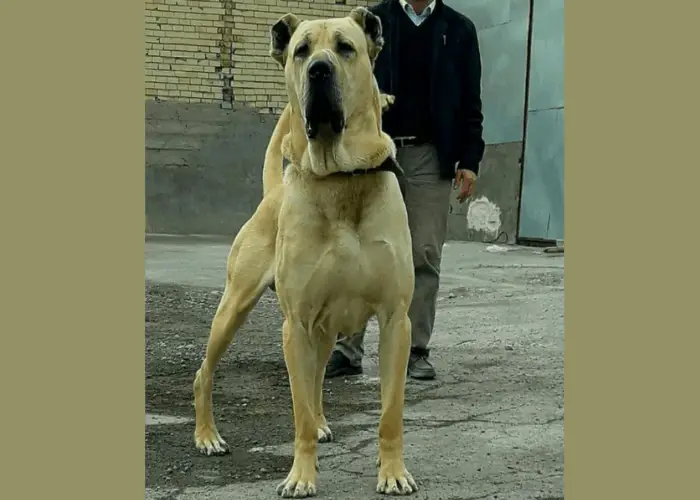
The Sarabi Dog (персијски мастиф in Russian) is a Mastiff, which immediately means “big dog” to most people when they hear it.
This breed is no exception. They come from a line of ancient Molossus dogs that were esteemed for their ferociousness and size in those days. Today, they are the national Dogs of Iran.
On average, the Sarabi can measure between 28 to a whopping 35 inches at the shoulder. The dog’s weight will correspond with its height, varying between 120 and 200 pounds.
At this size, it’s no wonder they were such an effective deterrent against large predators searching out livestock- even bears. Their size also aids in visualizing a formidable threat to any human intruders.
These are solid dogs- heavy-boned and not afraid to throw their weight around. It’s best to ensure they get plenty of opportunities to help keep them in decent shape, as they are prone to suffer from obesity without enough exercise.
Sarabi Dog Colors
Sarabi dogs came in 3 colors: Fawn, sable, and black.
Sarabi Dog Temperament
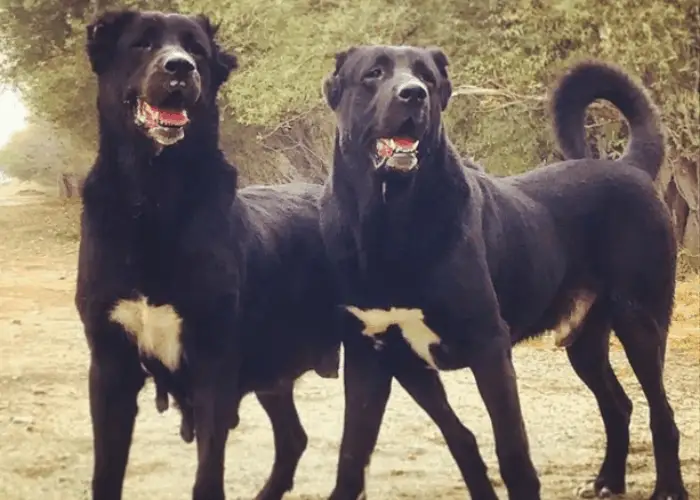
Sarabi dogs are quick to figure things out for themselves, intelligent, and independent. This breed is incredibly loving toward its family and fiercely loyal. If you’re part of the family, you’ll have a friend.
However, if you’re not part of the family, the breed can behave aloof and will not tolerate whatever it perceives as a threat. They also have a strong prey drive, making smaller pets a bad idea to share the home with.
That same prey drive should also be considered if small children are home. Though the dog won’t try to harm a family member, its size and weight while chasing and playing might make it inevitable.
Early and often training and socialization are necessary to prevent the dog from being aggressive toward strangers. But even a trained Sarabi will always have the guardian instinct armed and ready- just held at bay when trained properly.
Sarabi Dog Lifespan
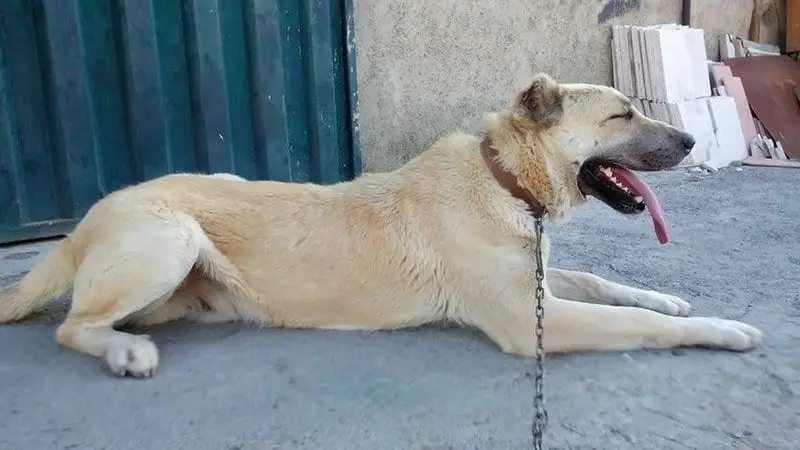
As far as large breeds go, the Sarabi is among the longest-lived. This breed can live up to between 12 to 15 years on average. Most large breeds max out around 13 years under normal circumstances, as their size takes its toll.
Studies have shown that larger dog’s age much faster than their smaller counterparts, leaving them shorter lifespans than smaller breeds. Mastiffs, in particular, typically don’t live longer than eight years.
The Sarabi breed lives nearly twice as long as the average Mastiff. Perhaps the breed age at a slower pace than their Mastiff cousins?
Sarabi Dog Bite Force
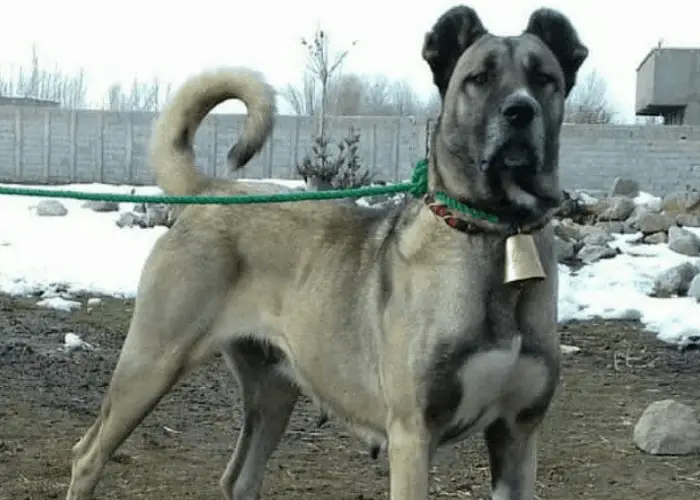
It’s not well documented how strong a Sarabi’s bite force can be. However, knowing that it is a faction of Mastiff, it will likely pack a punch.
For some reference, the dog with the reputation for having the strongest bite force is the Kangal (a Turkish variety of Mastiff), biting down at 743 psi. The Sarabi is very similar in size and physique compared to the Kangal.
The Italian Mastiff (Cane Corso) bites down at around 700 psi, and the English Mastiff clamps somewhere over 500 psi.
Understanding that an average dog in size, strength, and weight typically has a bite force that rests within 100 to 200 psi, it’s clear that the Mastiff variety is equipped with an incredibly forceful bite.
Final Thoughts
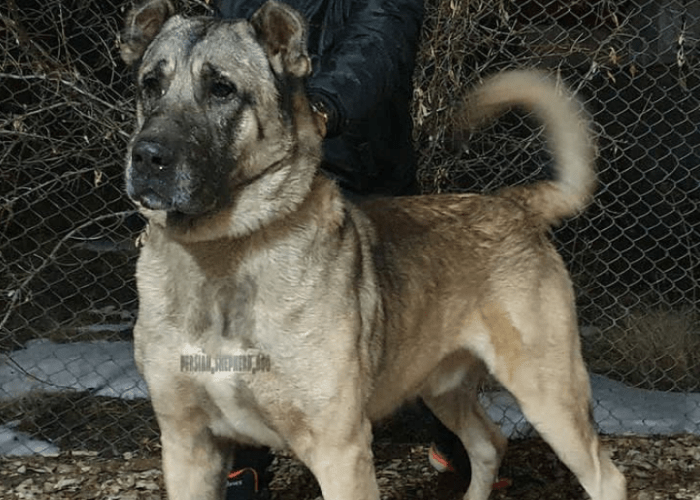
Whichever name you’d like to call it; Sarabi, Persian Mastiff, Iranian Mastiff, or Iranian Shepherd, this breed has a long history of working alongside mankind.
It’s been fighting alongside its masters or protecting the flock for centuries and hopefully will be doing so for many years.
But today, the breed is becoming rather rare by worldwide standards. Unless there’s a concentrated effort to make people more cognizant of their existence, their numbers will continue to decline, which would be a shame.
Related Questions:
1. Are Sarabi Dogs Dangerous?
As far as its family is concerned, the only thing dangerous about the Ciobănesc Persian breed will generally be its size mixed with its desire to be active rather than an ugly or dangerous temperament.
This breed knows no fear; if a threat is detected, it’s no longer a threat but a target. For centuries, they have been bred for specific purposes such as guarding, herding, and fighting. These instincts can be trained down and subdued but not erased.
Sarabi dog is a huge, incredibly strong, and intelligent breed, which makes for a seriously dangerous dog if raised, neglected, abused, or otherwise untrained. Remember, the same is true for any large breed, not just the Sarabi.
2. How Much is a Sarabi Dog Puppy?
In the United States, the Sarabi dog’s price is anywhere between $500 to $1,000. However, one must be careful and sniff out the breeder’s reputation. The reason is that AKC does not recognize this breed at this time. Therefore, something’s up if a breeder claims they have AKC papers available.
Before spending your money, use the utmost diligence to ensure that both parents are what the breeder claims they are to the best of your ability.
I’m not trying to suggest that it would be likely that someone may try to sell you a less-than-purebred Sarabi, but it’s just that much easier to do so without having to hold particular standards such as what’s required by AKC.


